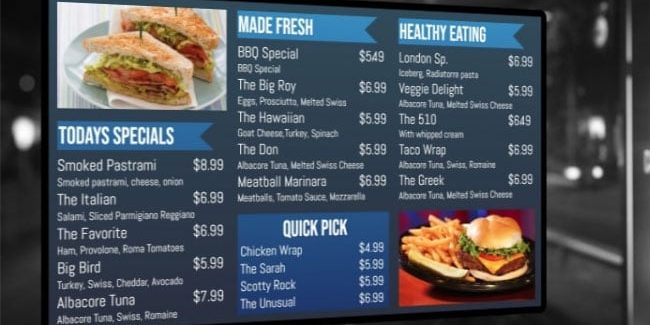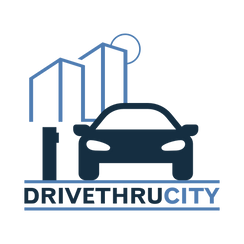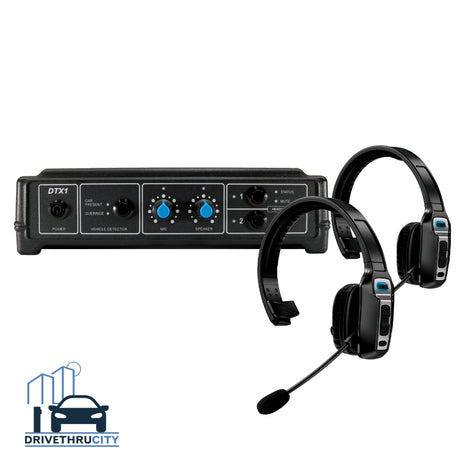How Digital Drive-Thru Displays Can Boost Speed and Profit
Posted by XMOD LLC

The ideal digital display solution often depends on menu size and daypart segments, along with the frequency of limited-time menu offers.
A study of more than 310 quick-service restaurant locations conducted in 2021 found that, on average, digital menu boards completed orders 9.2 percent faster.
With major changes to consumer behavior during the COVID-19 pandemic, many quick service restaurants are now adjusting their procedures and even their physical structures to meet the needs of a modern customer base that, generally, desires less interaction, faster service, more information and personalized attention. As customers increasingly head to the drive-thru instead of walking inside, major chains are now experimenting with smaller interior footprints, reduced seating and even extra drive-thru lanes that feature digital displays that can improve order accuracy, increase check average and reduce total service time.
Making the Drive-Thru More Satisfying
For many quick-service restaurants, drive-thru windows have been generating a majority of their revenue even before the pandemic. This trend was historically driven by customer lifestyle, attitudes and expectations, but it became a must-have lifeline for many quick-service restaurant owners after a global health crisis forced the closure of indoor dining spaces for 18 months or more.
Of course, not all drive-thrus are equal, and quick-service restaurants that have not yet invested in digital display technologies may be leaving money on the table and increasing customer dissatisfaction. For instance, a study of more than 310 quick-service restaurant locations conducted in 2021 found that, on average, quick-service restaurants with digital menu boards at the drive-thru completed orders 9.2 percent faster than locations with printed, static menu boards (356 seconds per order vs. 323 seconds per order).
Since total time spent in the drive-thru line is the top customer concern, reducing it by 9 percent can help improve customer satisfaction while serving more total customers, creating opportunity for higher revenues. Additionally, employees’ time is finite, and the less time workers spend verifying orders or correcting mistakes, the more time they have to focus on operational needs such as cleaning, stocking and prep work.
One of the most valuable uses of digital displays at drive-thrus is providing order confirmation. Order confirmation boards make it easier for customers to see their order and ensure it’s correct in real-time, improving order accuracy and reducing the total time of their visit, while also encouraging add-on purchases. The latest digital display and content management solutions even offer the ability to segment a large display into separate content areas, so operators can add order confirmation to drive-thrus without requiring a dedicated screen.
Another clear benefit is the ability to advertise high-margin options, specials, limited-time offers and upsell items with moving high-definition graphics that capture customers’ attention with enhanced appetite appeal.
One Size Does Not Fit All
Each quick-service restaurant has unique needs, and the ideal digital display solution often depends on menu size and daypart segments, along with the frequency of limited-time menu offers. A single digital display may be sufficient for some quick-service restaurant drive-thrus, while others may require multiple displays to fit all the menu information and promotional graphics. The on-screen content is important, too, with some chains using simple text and images, others using moving graphics, and some even using live video feeds from employee-facing cameras, so the drive-thru display provides a face-to-face interaction.
Knowing that every restaurant is different, manufacturers have developed a wide variety of high-brightness solutions, ranging from 15-inch LCD screens with accompanying waterproof housings to 55-inch outdoor-rated displays that don’t require a housing at all. High brightness is critical for drive-thru displays to be legible in direct sunlight, with the latest models delivering up to 4,000 nits.
For quick-service restaurants with displays inside and outside, utilizing a single display manufacturer can simplify compatibility, support and content delivery, ensuring that all components work correctly together, and each display can be adjusted using the same interface. The more displays a location has, the more important it is to have immediate control over the content.
The Drive-Thru of the Future
Quick-service restaurants pioneered the drive-thru decades ago, while modern fast-casual and sit-down restaurants have focused primarily on seating areas and take-out orders. The COVID-19 pandemic caused some major players to rethink their strategies. Chipotle and Applebee's are now testing drive-thrus to increase customers’ options and ensure no sale is lost just because someone doesn’t want to walk inside and wait for their order. This places additional pressure on quick-service restaurants to improve their customer experiences as they now have new competition for stop-and-go meals.
As more quick-service restaurants and other restaurants invest in digital displays for drive-thrus, they can realize additional benefits through the use of artificial intelligence (AI) and automation. Some companies are now experimenting with menu boards that include AI voice software to take orders, which could eventually reduce the need for employees to take each order. Quick-service restaurants could also use AI and automation to make upsell recommendations, deliver personalized service and reward mobile-app members.
Some larger quick-service restaurant locations are currently testing expanded drive-thru service with multiple lanes or new drive-in-style parking spaces, which both feature digital displays to enable fast ordering and verification. Depending on the specific design, these new setups may utilize touchscreens, similar to the indoor kiosks that have become fairly common at high-traffic locations. The one thing all of these new ideas and experiments have in common is that they all rely on digital signage to deliver a better customer experience.
Quick-service restaurant owners can also reap significant benefits, including greater control over promotions and pricing through real-time updates to every menu in the restaurant, and even across multiple locations. In order to best serve customers who have technology infused into virtually every part of their day, quick-service restaurants must invest in long-term solutions that provide superior experiences and encourage customers to become repeat customers.
David Boerlin is a Key Account Manager of Digital Signage for QSR at LG Business Solutions USA. For over 25 years, he’s helped provide new and emerging technologies for leading restaurant brands to improve their guest experiences and sales efficiencies.



